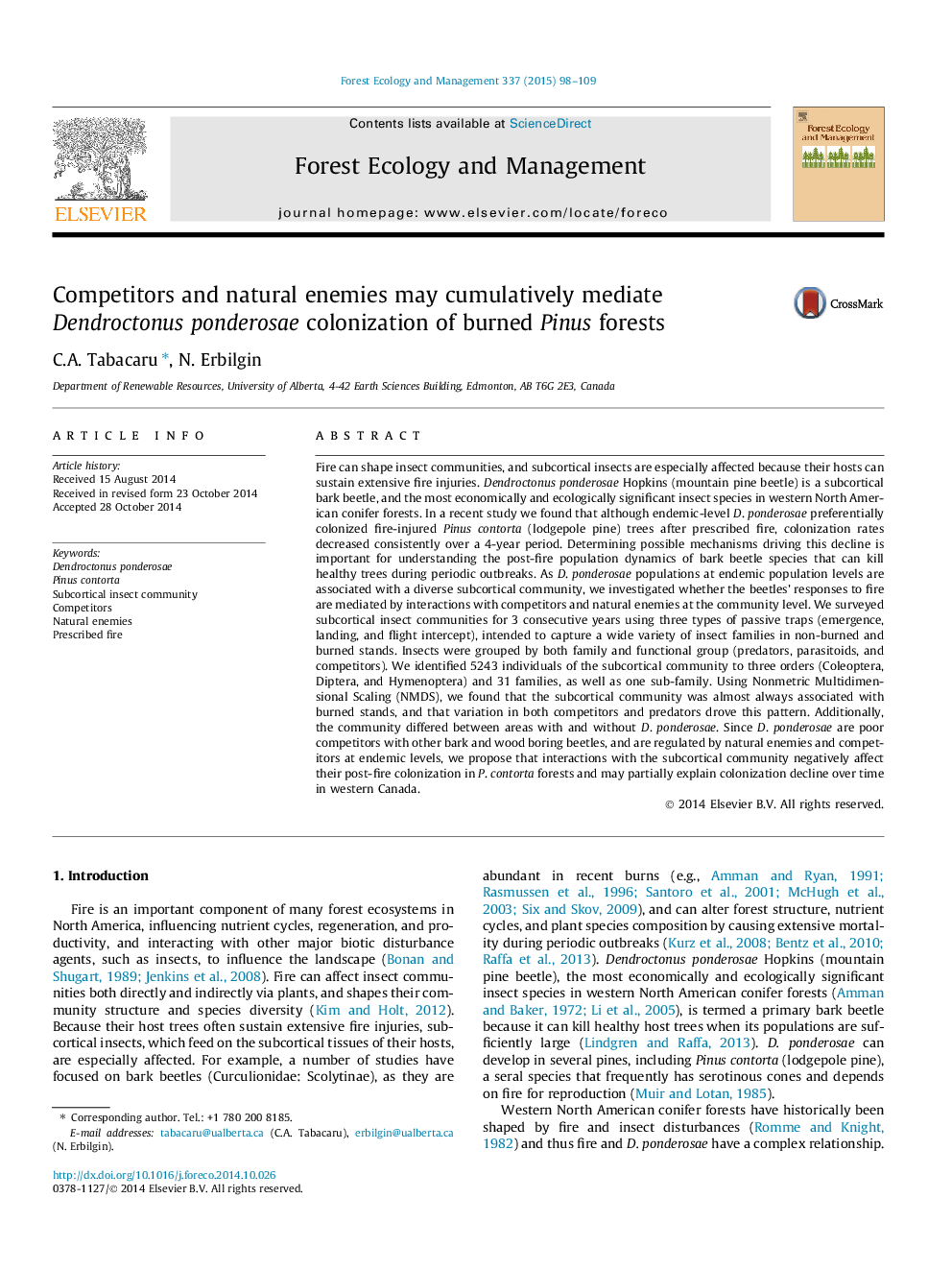| کد مقاله | کد نشریه | سال انتشار | مقاله انگلیسی | نسخه تمام متن |
|---|---|---|---|---|
| 6542894 | 159185 | 2015 | 12 صفحه PDF | دانلود رایگان |
عنوان انگلیسی مقاله ISI
Competitors and natural enemies may cumulatively mediate Dendroctonus ponderosae colonization of burned Pinus forests
دانلود مقاله + سفارش ترجمه
دانلود مقاله ISI انگلیسی
رایگان برای ایرانیان
کلمات کلیدی
موضوعات مرتبط
علوم زیستی و بیوفناوری
علوم کشاورزی و بیولوژیک
بوم شناسی، تکامل، رفتار و سامانه شناسی
پیش نمایش صفحه اول مقاله

چکیده انگلیسی
Fire can shape insect communities, and subcortical insects are especially affected because their hosts can sustain extensive fire injuries. Dendroctonus ponderosae Hopkins (mountain pine beetle) is a subcortical bark beetle, and the most economically and ecologically significant insect species in western North American conifer forests. In a recent study we found that although endemic-level D. ponderosae preferentially colonized fire-injured Pinus contorta (lodgepole pine) trees after prescribed fire, colonization rates decreased consistently over a 4-year period. Determining possible mechanisms driving this decline is important for understanding the post-fire population dynamics of bark beetle species that can kill healthy trees during periodic outbreaks. As D. ponderosae populations at endemic population levels are associated with a diverse subcortical community, we investigated whether the beetles' responses to fire are mediated by interactions with competitors and natural enemies at the community level. We surveyed subcortical insect communities for 3 consecutive years using three types of passive traps (emergence, landing, and flight intercept), intended to capture a wide variety of insect families in non-burned and burned stands. Insects were grouped by both family and functional group (predators, parasitoids, and competitors). We identified 5243 individuals of the subcortical community to three orders (Coleoptera, Diptera, and Hymenoptera) and 31 families, as well as one sub-family. Using Nonmetric Multidimensional Scaling (NMDS), we found that the subcortical community was almost always associated with burned stands, and that variation in both competitors and predators drove this pattern. Additionally, the community differed between areas with and without D. ponderosae. Since D. ponderosae are poor competitors with other bark and wood boring beetles, and are regulated by natural enemies and competitors at endemic levels, we propose that interactions with the subcortical community negatively affect their post-fire colonization in P. contorta forests and may partially explain colonization decline over time in western Canada.
ناشر
Database: Elsevier - ScienceDirect (ساینس دایرکت)
Journal: Forest Ecology and Management - Volume 337, 1 February 2015, Pages 98-109
Journal: Forest Ecology and Management - Volume 337, 1 February 2015, Pages 98-109
نویسندگان
C.A. Tabacaru, N. Erbilgin,